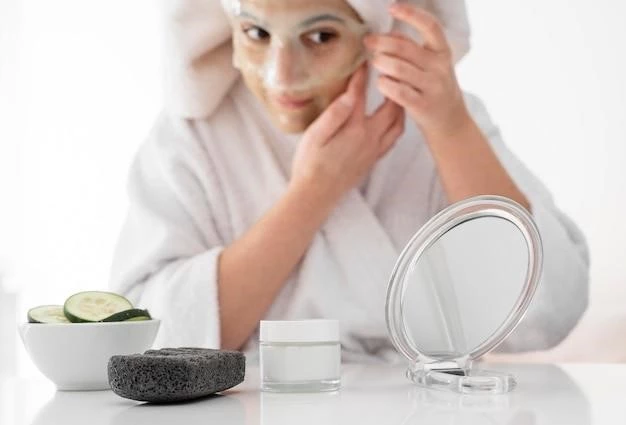Uses of Salicylic Acid in Skincare
Salicylic acid, a beta hydroxy acid, is utilized in skincare for its exfoliating properties to help clear pores and reduce acne. It is commonly used in acne treatments and products to assist in shedding dead skin cells effectively.
– Salicylic Acid for Acne Treatment
Salicylic acid is a key ingredient in many acne treatments due to its ability to exfoliate the skin, clear pores, and help in the reduction of acne. It works effectively as a topical treatment for various forms of acne.
– Exfoliating Properties of Salicylic Acid
Salicylic acid’s exfoliating properties help in removing dead skin cells and unclogging pores, making it particularly beneficial for acne-prone skin. Its beta hydroxy acid nature enables it to penetrate oil-laden skin effectively.
– Treatment of Skin Conditions like Psoriasis and Warts
Salicylic acid is often used to treat a variety of skin conditions, including psoriasis and warts, due to its ability to help shed the outer layer of skin, clear pores, and remove calluses. It contains beta hydroxy acid, making it useful for such purposes.
Side Effects of Salicylic Acid Topical Treatment
Salicylic acid can cause skin irritation, dryness, and potentially worsen acne temporarily. Other common side effects may include gastrointestinal symptoms and adverse reactions, emphasizing the importance of cautious usage.
– Skin Irritation and Dryness
One of the common side effects of using salicylic acid in skincare is skin irritation and dryness. This can occur as the acid works to exfoliate the skin, leading to potential redness, flaking, or discomfort.
– Potential for Making Acne Worse Temporarily
Salicylic acid, while effective in treating acne, may initially worsen acne before improvement as it works to unclog pores and remove dead skin cells. This temporary worsening is a common occurrence seen in the initial stages of treatment.
– Other Common Side Effects
Salicylic acid may cause gastrointestinal symptoms, adverse reactions, and allergic responses. It is vital to be aware of these common side effects when using products containing salicylic acid for skincare purposes.

Information on Salicylic Acid and Skin Conditions
Salicylic acid is a beta hydroxy acid known for its exfoliating properties, aiding in clearing pores and reducing acne. It is safe for various skin types, tones, and ethnicities, dissolving bonds between dead skin cells for efficient exfoliation.
– Role of Salicylic Acid in Clearing Pores and Reducing Acne
Salicylic acid is known for its exfoliating properties that help clear pores and reduce acne by dissolving the bonds between dead skin cells, offering an effective treatment for acne-prone skin.
– Treatment of Seborrhea, Dandruff, and Psoriasis
Salicylic acid is effective in treating seborrheic dermatitis, dandruff, and psoriasis due to its exfoliating properties. By helping remove dead skin cells and unclogging pores, salicylic acid can improve these common skin conditions.
– Benefits for Various Skin Types and Ethnicities
Salicylic acid offers benefits for a diverse range of skin types and ethnicities. Its exfoliating properties help in reducing acne, clearing pores, and improving skin texture across different skin tones effectively.
Safe Usage of Salicylic Acid for Acne Treatment
Salicylic acid should be cautiously incorporated into skincare routines, starting with lower concentrations to avoid irritation and gradually increasing frequency based on skin tolerance. It is important to be mindful of potential side effects such as skin dryness and temporary worsening of acne.
– Importance of Starting with Lower Concentrations
To ensure safe usage of salicylic acid for acne treatment, it is crucial to start with lower concentrations to prevent irritation. Gradually increase the frequency based on skin tolerance, minimizing the risk of adverse effects like skin dryness and temporary acne exacerbation.
– Gradual Increase in Frequency to Avoid Irritation
When using salicylic acid, gradual increase in frequency helps prevent skin irritation. This approach allows the skin to adjust slowly, reducing the risk of adverse effects like dryness and temporary acne worsening.
– Recommendations for Safer Incorporation into Skincare Routine
When integrating salicylic acid into your skincare regimen, it is advisable to start with a lower concentration to avoid irritation. Gradually increasing usage frequency based on skin tolerance can help prevent side effects like dryness and temporary acne worsening.
– Adverse Reactions and Allergic Responses
Salicylic acid’s usage may lead to adverse reactions such as skin irritation, redness, and allergic responses. It is essential to monitor for any signs of discomfort or unexpected skin reactions when incorporating salicylic acid into skincare routines.
